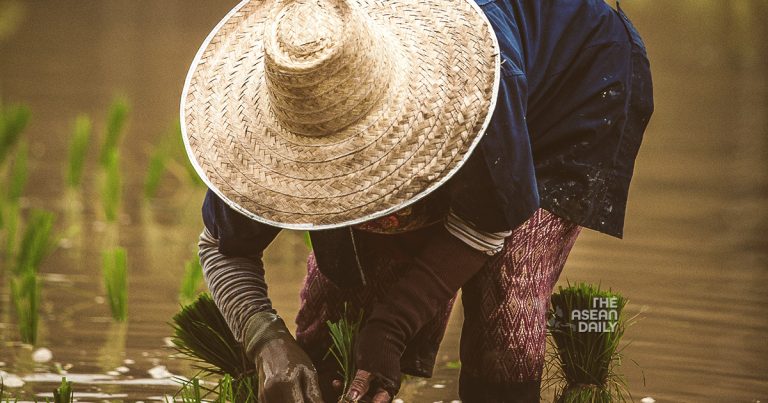24-8-2023 (HANOI) Vietnam is experiencing a surge in demand and skyrocketing prices for its rice following India’s imposition of export restrictions last month. As the world’s largest rice supplier, India’s move to ban the export of non-basmati white rice has led to a spike in global rice prices. While this presents an opportunity for Vietnam to increase its production and exports, concerns have emerged regarding unfavorable weather patterns linked to climate change that could affect future crops.
India’s export curbs were implemented in July to stabilize domestic prices and address inflation and fears of a rice shortage. These restrictions followed a ban on broken rice shipments imposed in September of the previous year, which remains in effect. The global rice market has reacted to India’s export ban by driving up prices, as buyers seek alternative sources amid concerns that limited supply will contribute to global food inflation and potentially lead to similar export restrictions by other suppliers.
In Vietnam’s rice bowl, the Mekong Delta, where 90 percent of the nation’s rice exports are cultivated, farmers are struggling to meet the soaring demand. Le Thanh Ben, a rice farmer from Can Tho in the southern Mekong Delta region, revealed that all his crops, covering a 26,000 square meter paddy field, have already been reserved, despite not being ready for harvest until October. Shortly after the implementation of India’s export curbs, a trader approached Ben and offered a significantly higher price than the usual market rate. However, the farmer expressed regret at accepting the deal too quickly, as prices have continued to rise and have now reached US$0.34 per kilogram.
Local paddy prices have surged by 50 percent, reaching an all-time high. The nation’s rice export prices have also experienced a sharp increase of approximately 35 percent, marking the most significant jump in 15 years. The situation has created a chaotic time for rice traders as demand outstrips supply. Nguyen Duy Thuan, CEO of agriculture firm Loc Troi Group, revealed that in the past month, 90 percent of the ships arriving in Vietnam had no rice to transport. Many of Vietnam’s rice exporters are hesitant to enter into new contracts with international buyers due to the volatile price fluctuations. Fulfilling existing contracts has also become challenging.
Industry insiders hope that the current market volatility will stimulate improvements and restructuring in Vietnam’s rice industry, leading to a more integrated and stable value chain. This could involve closer collaboration between exporters and farmers in terms of crop planning, financial support, and commitments to prices and volumes. Thuan emphasized the importance of establishing strong links with farmers, as those without such connections are likely to struggle in the current market environment. He dismissed concerns that Vietnam might follow India’s lead in imposing export restrictions, highlighting that the domestic market consumes a significant portion of the country’s rice production.
Rice is a staple food in Vietnam, with each Vietnamese person consuming an estimated 90 kilograms of rice per year. In the first seven months of 2023, the nation exported nearly 4.9 million tonnes of rice, representing an almost 20 percent increase in volume compared to the previous year. Export revenue also rose by close to 30 percent, reaching US$2.58 billion.
To meet the growing demand, authorities in Vietnam’s Mekong Delta region plan to increase rice production by approximately 200,000 tonnes this year. The country, ranked as the world’s third-largest rice supplier, aims to export 7.8 million tonnes of rice in 2023, a 10 percent increase from the previous year. Nguyen Nhu Cuong, the director of crop production at Vietnam’s Agriculture Ministry, explained that this plan aims to take advantage of the global rice shortage created by India’s export ban, which Vietnam can help alleviate. Cuong also assured that the country has learned from past experiences in dealing with extreme weather conditions that could impact rice production. Measures such as adjusting planting timings, utilizing dykes and irrigation systems, and addressing saltwater intrusion and drought in the Mekong Delta will be implemented to minimize the impact of weather-related challenges.
However, concerns remain about the potential impact of dry El Nino weather in 2024 on Vietnam’s rice production. Cuong acknowledged that the Winter-Spring rice crop of 2023-2024 would likely be affected by weather conditions such as saltwater intrusion and dry El Nino weather. Nevertheless, he expressed confidence that Vietnam has the necessary strategies in place to mitigate these challenges and minimize the impact on rice production.




